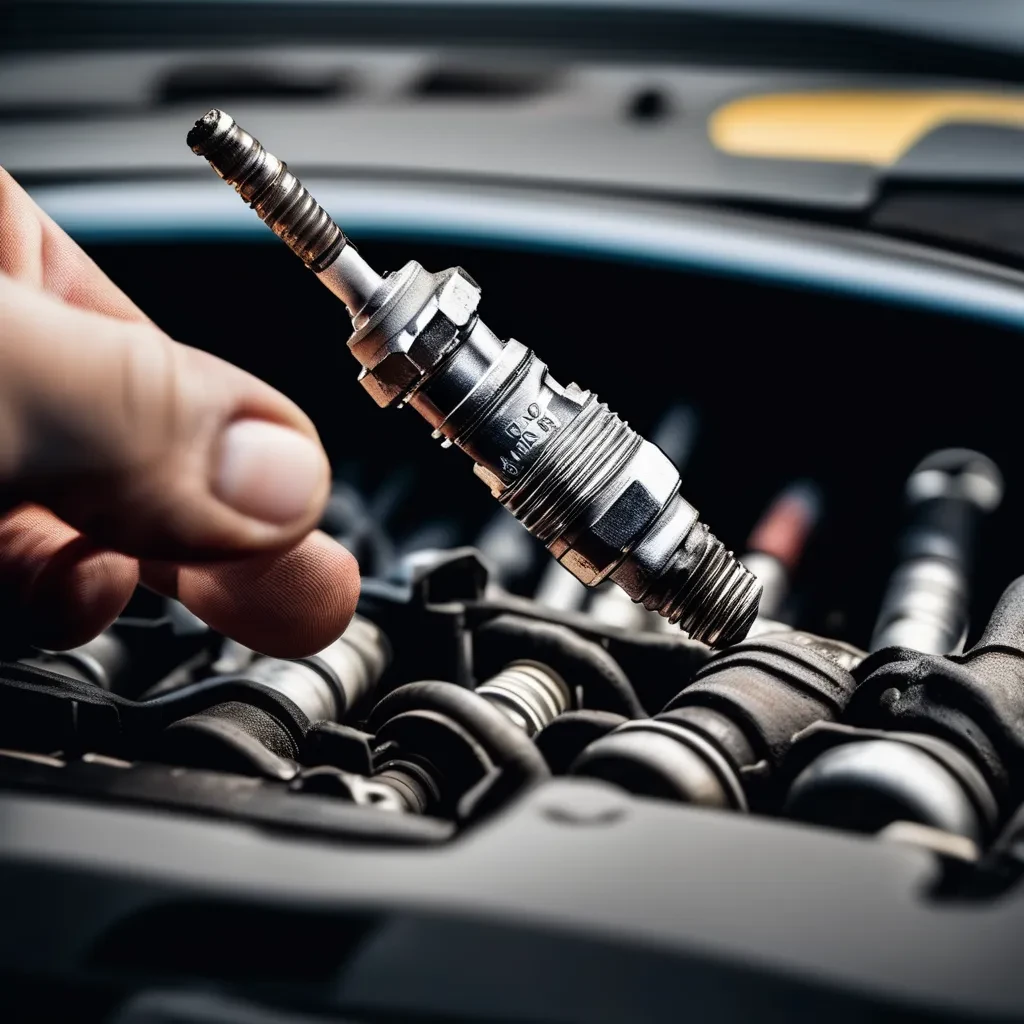The Audi A4 is renowned for its advanced engineering and superior driving experience. However, like all vehicles, it is not immune to technical issues. One of the most concerning problems for Audi A4 owners is the Drive System Malfunction.
This issue can arise unexpectedly, leaving drivers with reduced performance or, in some cases, an inoperable vehicle.
The Audi A4 Drive System malfunction signals a problem with the transmission, sensors, or electrical system. Immediate diagnosis by a technician is crucial to avoid performance and safety issues.
This comprehensive guide will explore the causes, symptoms, and potential solutions for a drive system malfunction in your Audi A4. For more insights about Audi, begin your informational journey with Carsdensity.
Table of Contents:
Audi Drive System Malfunction – Understanding the Problem!
If your Audi shows a drive system malfunction, it’s important to act quickly to maintain safety and performance. Start by checking for any warning lights on the dashboard and try restarting the vehicle.
Next, make sure to check fluid levels, particularly the transmission fluid. Low fluid levels or leaks could cause drive system issues. If the problem doesn’t go away, using an OBD-II scanner to read diagnostic trouble codes (DTCs) can help identify the specific malfunction.

If the problem persists or the cause is unclear, seek professional help. Consulting a qualified mechanic or visiting an authorized Audi service center will ensure a thorough diagnosis and effective solution.
Acting promptly is key to preventing further damage and keeping your Audi running at its best. Sharing your experiences with other Audi owners can also be helpful for those facing similar issues.
By understanding and addressing Audi drive system malfunctions, you’ll be better equipped to handle these problems and enjoy a smooth driving experience.
Read Also: Audi vin decoder options list – Comprehensive Visual Guide!
Audi Car Drive System Issue – Achieve Optimal Performance!
As an Audi owner, it’s important to recognize common drive system malfunctions and how to resolve them. The drive system is a critical part of your car that ensures smooth and efficient operation. However, like any mechanical system, it can have issues that impact your driving experience.
A common problem with the Audi drive system is the risk of malfunction. This can present itself through unusual noises while driving, trouble shifting gears, or dashboard warning lights. These symptoms should not be ignored, as they might signal a significant problem with the drive system.
If you notice any of these signs, it’s essential to act quickly by consulting a qualified mechanic or visiting an authorized Audi service center. These professionals have the expertise and specialized tools needed to diagnose and fix drive system problems.
Regular maintenance is another key factor in keeping your Audi’s drive system healthy. Follow the manufacturer’s recommended service schedule and use genuine parts to keep your drive system functioning optimally and avoid future issues.
In addition to regular maintenance, pay attention to any changes in your car’s performance. A sudden drop in fuel efficiency or power could indicate a drive system problem. Ignoring these signs may lead to more severe damage and costly repairs.
Read Also: Audi A4 Drive System Malfunction – Everything You Need to Know!
Faulty Drive System Control Module:
A malfunctioning control module can disrupt the overall performance of your vehicle by impairing the coordination of various components. Signs include dashboard warning lights, difficulty shifting gears, and uneven acceleration. Have a mechanic inspect and, if necessary, replace the faulty control module.

Worn-Out Clutch:
The clutch is vital for smooth gear changes, but it can wear out over time. Signs of a worn clutch include difficulty shifting gears, slipping or grinding noises, and a burning smell. A trusted mechanic can determine whether an adjustment or full replacement is needed.

Worn Suspension Components:
The suspension system is crucial for vehicle stability and handling. Worn components like shocks or struts can cause uneven acceleration and difficulty shifting gears. If you notice bumpy rides or vibrations, have a professional inspect and replace any faulty parts.
Read Also: Do Audi Dealers Negotiate? – A Complete Visual Guide!
Low Transmission Fluid:
Transmission fluid is necessary to lubricate and cool the transmission. Low fluid levels can lead to gear-shifting difficulties and transmission damage. Regularly check and top off the transmission fluid, and address any leaks with professional help.

Engine Misfires:
Engine misfires disrupt combustion, affecting the engine’s efficiency and performance. These issues require prompt attention to maintain smooth operation.
Steering Angle Sensor Malfunction:
Problems with the steering angle sensor can reduce steering accuracy, impacting vehicle control and safety. This requires immediate professional diagnosis and repair.
Faulty Cables or Connectors:
Faulty cables or connectors can disrupt communication between vehicle components, causing erratic behavior or malfunctions. A professional inspection is needed to resolve these issues.
Low Battery Voltage:
Low battery voltage can cause various electrical problems, from starting difficulties to malfunctions in electronic systems. Ensure the battery is properly charged to maintain smooth operation.
Trunk Lid Operation Issues:
If you have trouble opening or closing the trunk, it may be due to mechanical or electronic issues. Addressing these concerns ensures safe and convenient vehicle use.
Read Also: Audi Q5 Years to Avoid – Don’t take risks!
Recognizing Audi Drive System Problems – Your Audi, Your Drive!
Spotting Early Warning Signs:
Pay attention to subtle signs like unusual vibrations or rough rides, which could indicate early drive system problems in your Audi. Addressing these early can prevent more serious issues and costly repairs.
Steering and Handling Issues:
Look out for difficulties in steering or maintaining control, as these could signal drive system issues affecting your Audi’s overall performance. Be attentive to any unusual steering responses or vibrations while driving.
Dashboard Indicators:
Understanding dashboard warning lights, such as ABS or TPMS, is essential for maintaining your Audi’s safety and performance. These lights may indicate drive system problems or issues with related components.
Listening for Unusual Noises:
Unusual noises like grinding or clunking while driving could point to problems with key drive system components such as the transmission or suspension. Transmission fluid is necessary to lubricate and cool the transmission.
Maintaining Engine Power:
Sudden engine power losses or difficulty maintaining speed could signal drive system malfunctions. Immediate attention is necessary to ensure safe driving and prevent further damage.

Read Also: Drive System Malfunction Audi Q7 – Let’s Explore!
Diagnosing a Drive System Malfunction
Diagnosing the exact cause of a drive system malfunction requires a thorough inspection by a qualified technician. The diagnostic method typically includes the following steps:
1. Onboard Diagnostics (OBD-II) Scanning:
The first step in diagnosing a drive system malfunction is to use an OBD-II scanner to retrieve any fault codes stored in the vehicle’s computer. These codes provide valuable information about which components may be malfunctioning.
2. Visual Inspection:
A visual inspection of the vehicle’s drive system components, such as the transmission, differential, and sensors, can help identify any obvious issues, such as damaged wiring, leaking fluids, or worn-out parts.
3. Test Driving:
A test drive allows the technician to observe the vehicle’s behavior under different driving conditions. This can help pinpoint issues that may not be apparent during a stationary inspection.
4. Component Testing:
In some cases, individual components may need to be tested separately to determine if they are functioning correctly. This can include testing sensors, checking fluid levels, or inspecting mechanical parts for wear and tear.
Read Also: Drive System Malfunction Audi – Everything you need to know!
Solutions and Preventive Measures
1. Regular Maintenance:
One of the best ways to prevent drive system malfunctions is through regular maintenance. This includes routine inspections of the transmission, engine, and drivetrain components, as well as timely fluid changes and part replacements. Regular maintenance can help uncover any concerns before they become more serious.
2. Addressing Issues Promptly:
If you notice any symptoms of a drive system malfunction, it is crucial to address them promptly. Delaying repairs can lead to further damage and more expensive repairs in the long run.
3. Using Quality Parts:
When replacing any components of the drive system, it is essential to use high-quality, OEM (Original Equipment Manufacturer) parts. These parts are designed to meet the manufacturer’s specifications and ensure the proper functioning of the system.
4. Software Updates:
Modern vehicles, including the Audi A4, rely on software to manage various systems. Ensuring that your vehicle’s software is up to date can help prevent drive system malfunctions caused by outdated or faulty software.
5. Professional Inspection:
Finally, always have your vehicle inspected by a qualified technician who has experience with Audi vehicles. They have the knowledge and tools necessary to diagnose and repair drive system malfunctions accurately.

Read Also: Audi Bluetooth Function is Currently Unavailable – Discuss with us!
What Does Drive System Malfunction Mean?
The “Drive System Malfunction” message in an Audi indicates an issue with any part of the vehicle’s drivetrain system, which includes components like the engine, transmission control system, and other related systems that allow the car to operate.
What Causes Drive System Faults Related to the Audi Battery?
A low battery voltage can trigger the “Drive System Malfunction” warning in an Audi. Often, the battery itself is not the problem; instead, the charging system may not be supplying enough power to keep it charged. This situation typically occurs when the vehicle is not driven regularly, leading to the car’s computer draining the battery.
What Is the Malfunction Indicator Lamp on the Audi A4?
The engine malfunction indicator light comes on when there is an issue with the engine. It usually appears as an engine symbol with the word “Check” below it. The light is typically yellow but can turn red if the problem becomes more serious. In some cases, it may also display a message to “Please contact service.”
Read Also: Audi q7 years to avoid – Don’t take risks!
Why Is My Audi A4 Misfiring?
Engine misfires in an Audi A4 are often caused by worn-out ignition coils or spark plugs. These components naturally wear out over time and need to be replaced regularly to maintain engine performance.
What Does the Drive Malfunction Warning Light Indicate?
A drivetrain malfunction occurs when the car’s engine computer detects a problem in the engine or transmission. When this happens, the vehicle may display a “Drivetrain Malfunction” warning and advise the driver to proceed with caution.
Is It Safe to Drive with the Malfunction Indicator Light On?
Driving with the check engine light on can lead to serious damage and more expensive repairs. Additionally, your vehicle’s fuel efficiency and overall performance are likely to decrease. It’s best to take your car to a qualified service center as soon as possible.
How Long Can You Drive with the Engine Malfunction Light On?
If the check engine light comes on while you’re driving, it’s generally safe to drive for 50 to 100 miles. However, you should visit a repair shop as soon as you can to avoid potential damage.
Read Also: Audi A4 Rattle When Accelerating – Causes, Diagnosis, and Solutions!
How Much Does It Cost to Fix a Malfunction Indicator Light?
The cost to diagnose and repair a malfunction indicator light can vary widely. Diagnostic fees range from $50 to $200, while repair costs can be minimal, like tightening a gas cap, or very expensive if the issue is more complex.
Can Low Oil Levels Set Off the Check Engine Light?
Yes, low oil pressure caused by low oil levels can cause the check engine light to turn on. If not addressed immediately, low oil pressure can severely affect your car’s performance and potentially cause it to break down.
Read Also: Audi q8 throttle lag fix – Don’t take a risk!
Can a dirty air filter cause the check engine light to illuminate?
A dirty air filter can cause the check engine light to illuminate. This happens because the engine isn’t receiving enough air, which prompts the vehicle’s system to trigger the warning light.
Frequently Asked Questions:
What are the most prevalent indicators of an Audi drive system malfunction?
Rough driving, poor handling, dashboard alerts, strange noises, power loss, and delayed gear shifts are prominent indicators.
Can I troubleshoot Audi drive system difficulties from home?
Yes, you can check fluid levels and look for visible problems, but professional diagnostics may be required for more complex issues.
How important is prompt action for drive system malfunctions?
Acting quickly is essential to prevent further damage and ensure your Audi’s safety and performance.
What do dashboard warning lights mean?
Dashboard warnings like ABS or TPMS lights can indicate drive system malfunctions or related component issues.
How should I handle sudden engine power loss in my Audi?
Seek professional help immediately to diagnose and resolve any drive system malfunctions affecting engine power.
Is it safe to ignore a drive system malfunction warning on my Audi A4?
Ignoring a drive system malfunction warning is not safe. This warning indicates potential issues in critical components like the engine or transmission, which, if left unaddressed, could lead to severe damage and costly repairs.
Conclusion:
A drive system malfunction in the Audi A4 can significantly impact the vehicle’s performance and safety, making prompt diagnosis and repair essential. Regular maintenance and professional inspection are key to preventing and addressing these issues.











